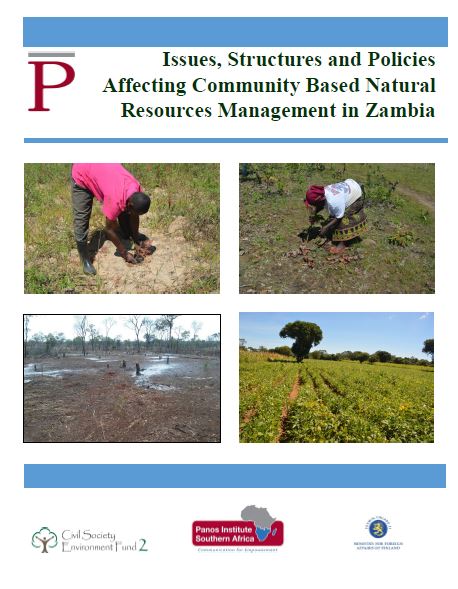
Issues, Structures and Policies Affecting Community Based Natural Resources Management in Zambia
Zambia currently suffers high environmental degradation due to the fact that rural livelihoods are largely natural resource based. Due to high poverty levels, the majority of citizens over-depend on the environment for livelihoods, creating a situation whereby the environment is unable to adequately renew itself to ensure sustainability. This has led to depletion of renewable natural resources which could have been preserved with effective sustainable management practices.
In the effort to address this environmental situation, the Government of Zambia has put in place several policies, structures and programmes such as the National Conservation Strategy of 1985 and the National Environmental Action Plan of 1994. Additionally, the Zambia environmental management strategies have adopted the Community-based Natural Resource Management (CBNRM) approach which is driven by the principle of community participation.
However, because of their top-down nature, the strategies have been ineffective in addressing the root-causes of the environmental problems. Community members have remained on the periphery of the conceptualisation and implementation of the strategies, with limited uptake at local community level, and low impact.
In view of the above, PSAf is implementing a project called Deepening CBNRM in Zambia, which aims at enhancing community engagement and involvement in sustainable environmental and natural resources management around issues of fish depletion and land degradation in Kazungula and Sinazongwe Districts (Ecological Region I); and deforestation and land degradation in Katete and Petauke Districts (Ecological Region II). In order to effectively do this, a baseline survey was conducted to identify and analyse capacity gaps of mechanisms/institutions for engagement, specific ENRM issues around deforestation and land degradation and fish depletion in the respective project sites, and the existing policies and legal instruments governing the ENRM in the country.
This Report, therefore, is a presentation of the findings of the survey and recommended actions to address the identified gaps in the mechanism/institutions for engagement and the policy and legal frameworks, and the ENRM problems.